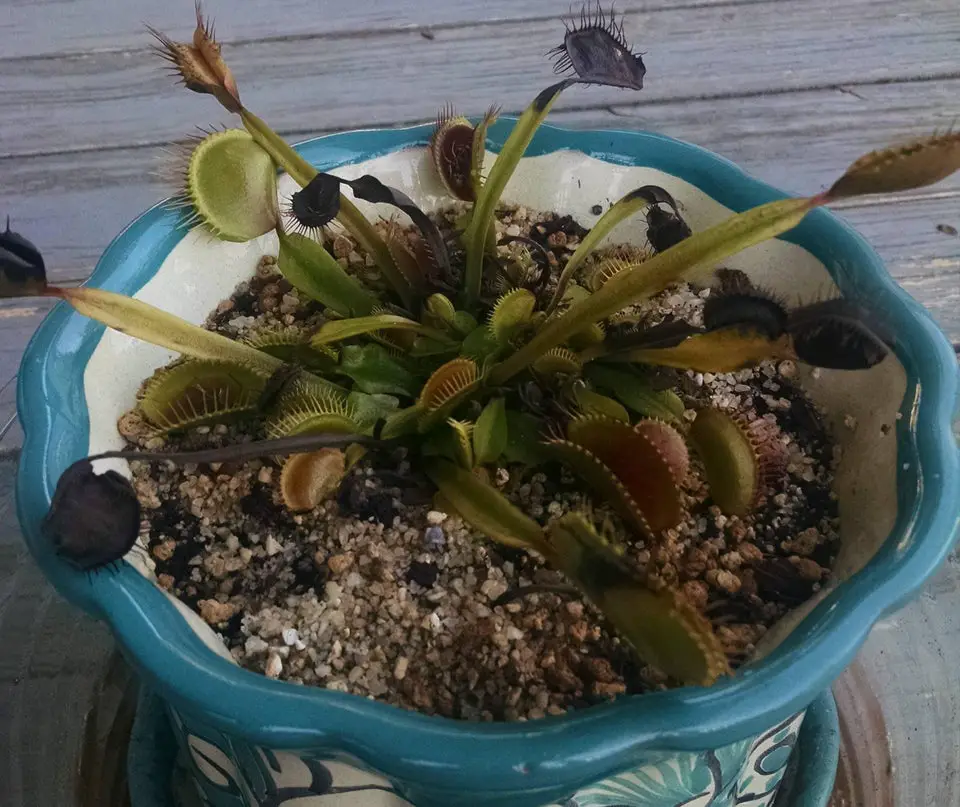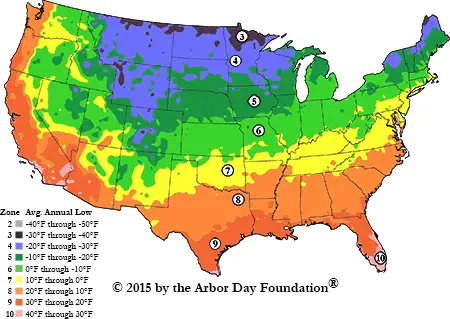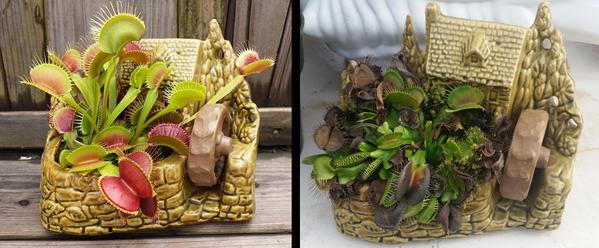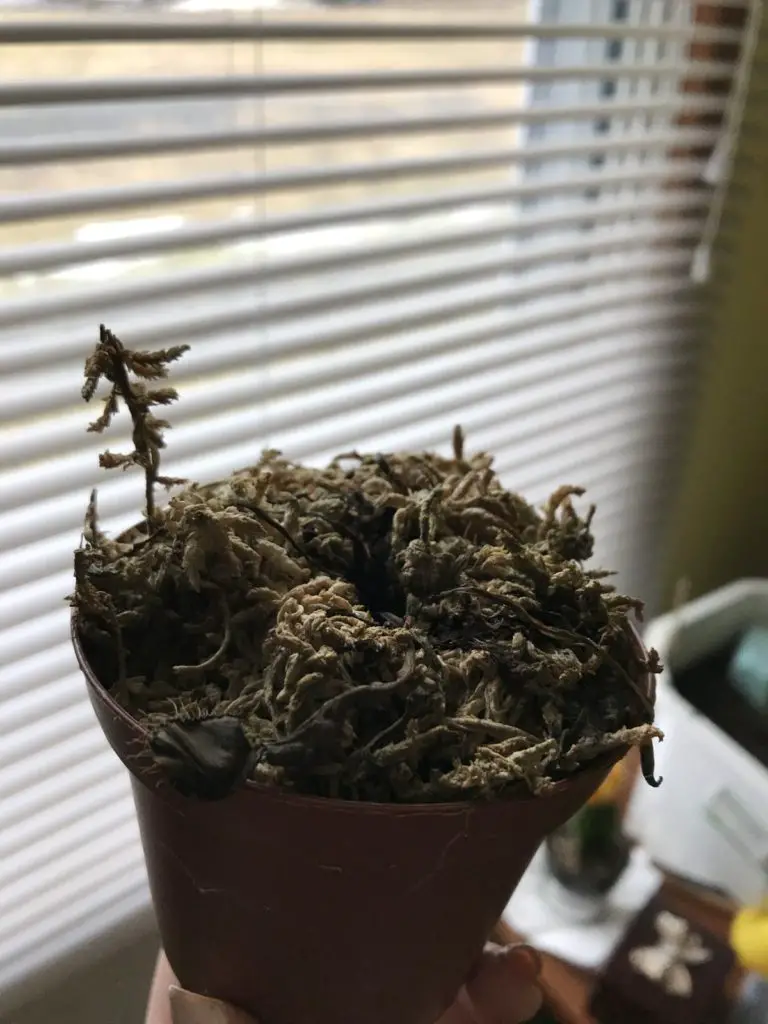Buy Carnivorous Plants Online!
Buy carnivorous plants from the most reputable and trusted carnivorous plant nursery, California Carnivores. We have partnered up and are giving all my viewers an exclusive 10% discount on your entire carnivorous plant order! Just enter CPHUB at checkout! Get the coolest venus flytrap cultivars, sarracenia, nepenthes and much MUCH more! You can even buy your next bag of premium carnivorous plant soil from them! Order Plant Mail, Click Here!| We are a participant in the Amazon Services LLC Associates Program, an affiliate advertising program designed to provide a means for sites to earn advertising fees by advertising and linking to Amazon.com. |
Like always, I’m so excited to talk to you today about Venus Flytrap dormancy. It’s a super common question I see about the venus flytrap. People often confuse venus flytrap dormancy with the plant being dead. Were going to talk about what a dormant venus flytrap looks like and what you can expect. Were then going to talk about how to tell if your venus flytrap is dormant or dead.

A venus flytrap when entering dormancy.
Also, before I get too far, I wanted to point out that I have spent a lot of time writing up some other great information venus flytrap articles.
You can check them out below!
Venus Fly Trap Ultimate Care Guide
How Does A Venus Flytrap Work?
Venus Flytrap Soil Mix And Potting (Maybe one of the most important things to note)
Picking A Pot or Planter For Venus Flytrap
What/How To Feed A Venus Flytrap – How to feed and what to feed a venus flytrap!
Venus Fly Trap Watering Guide – Learn how often and what kind of water to give your plant!
Also, if you like this article and found it helpful if you could share it on your favorite social media platform, Pinterest, Facebook, Instagram or whatever you prefer. Even if you have a website a link back from your site would mean the world to me! Lets get on to venys flytrap dormancy!
Venus Flytrap Dormancy
One of the biggest misconceptions with Venus Flytraps or Dionaea muscipula is that the plants are tropical and need a year round dose of humidity and sun. What most people don’t realize is that they are actually very hardy perennial plants. People always want to assume that all carnivorous plants are from exotic, humid and hot locations.
The venus flytrap being a perennial basically means that they flourish during the spring an summer then die back and prepare for a dormancy period. During the winter the venus flytrap will go dormant and come back in the spring from the energy they saved in the root stock or rhizome.
When fall comes around the venus flytrap prepare for the harsher winter months. This is the natural way for this plant. Light freezes and frost wont kill the hardy venus flytrap but extended freezes can kill them.
I have seen some arguments popping up in carnivorous plants communities on the internet in regards to eliminating the dormancy period for venus flytraps but all the most experienced growers I have read about say that for prolonged healthy life for venus flytraps they should have a minimum of a 10 week dormancy period. Most growers will say 3-5 months a year are best.
One of the biggest problems and misconceptions are due to the plant surviving a fairly long time without going dormant. The truth is however, over a prolonged period of time the venus flytrap will weaken and eventually die if they aren’t allowed dormancy periods.
Caring For Venus Flytrap During Dormancy
Venus flytraps will require as much light as possible to stay healthy and strong during dormancy. If they are going to be in the dark it’s actually better to keep them in colder conditions, you will need something under 40 degrees.
If the temperatures are staying above 40 degrees they need to have as much light exposure as possible. If your in a zone 7 or lower in the more extreme latitudes you may need to employee a couple of the more commonly used over wintering options for their venus flytraps.
Since I mentioned zone 7 above, lets take a quick look at the climate zones to help you understand when I make these references.
Hardiness Zone Map
Okay, I’m sorry to jump away from the caring for venus flytraps during dormancy section but understanding the hardiness zone map in the US is going to help you understand what I’m referencing through the rest of this article. From here on out I’ll simple reference zones by a number. You can look up your location in the US and see which zone you are in or which zone you want to grow these cool carnivorous plants.

Okay, now that you understand the zones, lets get back to venus flytrap dormancy care.
Back To Dormancy Care For Venus Flytraps
Sorry about the detour there but now you will be able to follow along with the different zones, which is going to be important!
There are a couple different options of dormancy, it just depends on which zones you live in. Some growers create their own bog gardens and mulch them in the winter. Others actually choose an extreme venus flytrap fridge dormancy method. For the fridge method to work the flytraps will need to reach their full dormancy state before being placed in the fridge.
During the winter months the venus flytrap should receive less water. As the weather is colder the soil does not dry out as quickly. Using too much water can cause root rot or crown rot to become a problem. When this happens mold can definitely become a factor.
You want to keep the soil wet but less wet than you did in the summer seasons. But you also want to make sure that the soil never gets completely dry. It’s a balance, but the right amount of water during the winter months is very important.
Even when dormant the venus flytrap photosynthesizes and will need as much light as possible to get as much energy as they can during winter months. Since no bugs will be caught, its more important than ever to get them as much natural light as possible. In their most natural growing conditions the venus flytrap will actually continue to grow even in the dormant stages.
The exception to the light rule is if they are being kept in conditions lower than 40 degrees, much like I talked about earlier. They will actually enter a state of suspended animation when kept this cold. This method will work but is not the most ideal set up for your venus flytrap.
I want to talk more in depth about the different dormancy types below, indoor, outdoor and even the fridge method. We will even discuss skipping dormancy so you can decide which is best for you. But first, I want to discuss the venus flytrap dead or dormant discussion.
Is My Flytrap Dead or Dormant?
There are definitely a few things to discuss here with the dead vs dormant question. Unfortunately due to the special care needs of the venus flytrap a lot of people do kill these neat plants but always hope their plant is just dormant. The other thing I see a lot is people wanting their plant to come out of dormancy too quickly so they get impatient and try to get it moving rather than just leaving it alone.

You can see a dormant vs in season venus flytrap.
Is my venus flytrap dead?
You will know your venus flytrap is dead when the plant seems to go black and die quickly. The entire plant turns a dark sickly color and all that is left is a mushy pile of mass. If you were to freeze a piece of lettuce and let it thaw, this is similar to how a venus flytrap would look if dying. The key thing to remember is when dead, it will happen quickly.
Is my venus flytrap going into dormancy?
This is a completely different process that happens at much slower speed. The leaves will blacken and seem dead but this will happen over a span of several weeks. It’s also important to note that when a venus flytrap enters dormancy it will typically keep some green leaves.
Another thing to look for is the time of the year. Did your plant enter these stages during autumn or fall? If so, there is a really good chance that its going dormant. If your plant starts to seem to die during spring or summer it can be an indicator that it is dying.
Keep your eyes open for any kind of green. If there is green anywhere, it could just be that dormancy has been triggered. Unless the plant is obviously dead the best thing you can do is just wait it out. The best thing you can do to a dormant plant is just leave it alone. Other than the little bit of care they need, just don’t mess with it. If it is dormant the best way to kill it is to start digging around it and messing with it. It’s in a fragile state and should be left to do what it needs to do.

This is a dead venus flytrap.
Time For Dormancy What Do I Do?
Remember the image above with the hardiness zones? Okay, I’m going to reference it here. If you are in zones 8-11 congratulations you have the easiest jobs. You honestly don’t have to do anything. This is the venus flytraps natural climate and just leaving them alone during the winter months is enough. I’m staring out of my window right now at about 3 feet of snow in a zone 4 area, I’m completely jealous.
Outside Dormancy
If you live in zones 4-7 it is still possible to keep your plants outside, they just need a little more care. The carnivorous plants will need to be properly insulated. It’s recommended that you bury your potted plants in a bog garden. If your venus flytrap is in an above ground pot it can be more susceptible to the cold and wind.
Once temperatures get close to freezing it will be time to provide even more protection. You will want to cover your plants with a shade cloth or burlap. It’s important to secure the cloth at the edges with something heavy, like a rock or log. Then cover the cloth with pine needs, straw or leaves. This will help keep moisture in and help keep the plants from freezing.
Don’t panic if your area gets snow. Snow is actually a great insulator and will help keep them from freezing.
Purchasing a cold frame or mini greenhouse might be the way to save your plants during colder winter dormancies. I encourage you to check out my guide to cold frames and mini greenhouses on carnivorousplantshub.com below!
Best Cold Frames & Mini Greenhouses For Carnivorous Plants
A bog garden can be kind of tricky but that’s okay, you can also build or buy what’s called a cold frame. See price info and what they look like on Amazon, click here for cold frames!
The other option would be good if your plants were still really small and in small pots. A mini green house would be a great way to go, and is actually pretty affordable. There is a great chance your venus flytraps will make it through dormancy in a mini greenhouse. Price and photos of the mini greenhouse on Amazon.
Inside Dormancy
If you are up in the colder climates or a zone 3 or lower you will want to bring your venus flytrap inside to a cold room. Maybe a garage or basement that isn’t as heated as the main house. It’s important to keep this room no warmer than 55 degrees. Plants should still be kept near a window to soak in as much light as possible.
It’s important to note that you would not want to keep it in the part of the house where people reside. The temperatures humans want to stay comfortable are way too warm for a venus flytrap dormancy. If the plant is brought out of dormancy too soon it can confuse the plant and eventually lead to its death.
Refrigerator Dormancy
Alright, you desperately want these plants but none of the options above work for you. This usually happens in one of two different areas. The first being that it just gets way too cold and the methods above wont work. Or, its way too warm year round and temps never go below 55 degrees. If you just can’t accommodate any of the other options above, this should be your last option as it’s the least likely your venus flytrap will survive.
Now you have decided the venus flytrap fridge dormancy is the only option, lets talk about it.
This is more of a process than just throwing your venus flytrap in the fridge for winter. It’s important to slowly decrease the photoperiod, which is the amount of hours it’s exposed to light. If you just take the plant from many hours of light a day and throw it in the fridge this can shock the plant and lead to its death. You want to slowly start giving it less light to make it a less shocking transition.
Whether you keep the venus flytrap potted or uproot them during fridge dormancy is completely up to you. Many people like to uproot due to the amount of room it takes to keep potted plants in your fridge.
If you keep them in a pot you want to put the entire pot in a plastic bag before putting them away in your refrigerator. Before doing that you will want to spray or dust the plant with a good fungicide.
Please check for any mold and fungus every couple of weeks. If needed continue to give the venus flytrap small doses of fungicide. You will ant to leave your plant in the fridge for at least 3 months.
If you don’t want to use up all that room in your fridge by keeping potted plants you can use the steps below to properly uproot and put in the fridge.
- Remove any of the potting media around the roots until they are totally bare, please do this very gently.
- Cut off any dying or dead growth.
- Dip the entire plant in fungicide. You can mist, but I suggest dipping the entire plant.
- Dampen some paper towels and wrap the entire plant in it. Make sure that the paper towel is damp and not soaked.
- You are now going to seal the dormant venus flytraps in ziplock bags. Its important to push all the air out before sealing them.
- The best place in your fridge will be the veggie drawer.
- You do want to check for mold every couple of weeks and you can bring the venus flytrap out of dormancy in 3 months.
Youtube Videos On Dormancy
Sometimes reading can be just a bit too much. I wanted to make sure I left you a video you could watch that helped explain venus flytrap dormancy a bit. So grab some coffee, sit back hit play and relax!
Here is another video of someone using a cold box or winter box to prepare their flytraps for the dormant period.
Skip Venus Flytrap Dormancy
I have seen this debated and argued in the carnivorous plant communities. The people that seem to actually know what they are talking about say that skipping dormancy basically is a slow death for venus flytraps. Your plant might last a couple years without dormancy but it won’t live for the long run.
If you ask me, I say try your best not to skip venus flytrap dormancy as this isn’t the natural way for the plant. Even if you keep an indoor venus flytrap it’s still important to assist it in triggering dormancy so that the plant lives for many years. I know it can be a bummer to not be able to “enjoy” your plant for months at a time, but it’s whats best for them.
Flytrap Dormancy Conclusion
There is no perfect science or way to put your venus flytrap in dormancy. All we can do is try our best to mimic the conditions they have where they thrive in the bogs of North and South Caroline. No way is going to be perfect and there may be some trial and error.
The fact is that it’s hard to find anyone that is the all knowing expert for the exact area you live. If you can somehow find a grower in your area that has had success and speak with them this might be the best way to tackle dormancy in your area. It’s a lot of trial and error and if you can find an expert where you live who has already mastered your specific conditions it might be the best option.
Thank you so much for stopping by and doing your best to understand venus flytrap dormancy. It’s a tricky part of having these beautiful carnivorous plants but a very important one. I’m glad you care enough to do your research and find out how to best care for your plant.
I wish you the best luck with all your venus flytrap growing efforts. Once you get it down its one of the most rewarding things you could ask for! If you have some extra time, make sure to check out some of our YouTube content at our YouTube channel below. Check out this video of me unboxing some new nepenthes and sundews! If you like what you see, make sure to subscribe!


